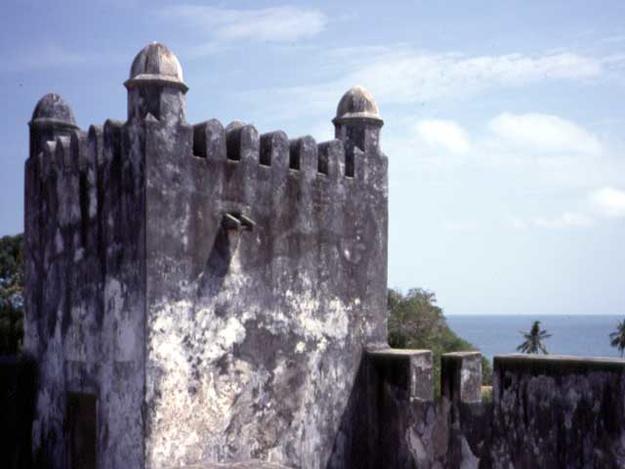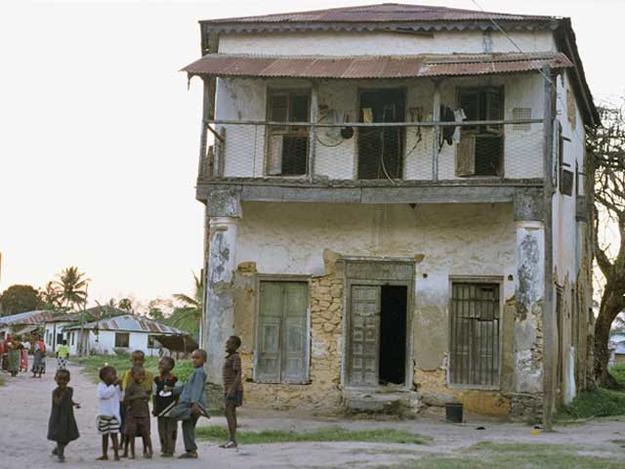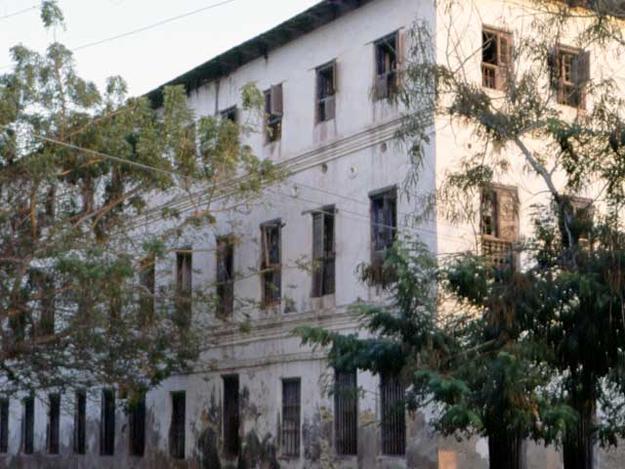Bagamoyo Historic Town
2002 World Monuments Watch
At once beautiful and disturbing, Bagamoyo’s eighteenth- and nineteenth-century coral buildings, specific to Swahili construction, served as a backdrop to East Africa’s slave trade. Slaves from the interior of Africa were gathered at Bagamoyo port by native, Arab, and Portuguese traders for shipment on to Zanzibar, which, in the 1700s, began providing slave labor for local plantations, European colonies in Africa, and a small number of American plantations. Omani sultans came to the area in the mid-seventeenth century to fight at the side of Queen Macena Mwema against the Portuguese at Zanzibar and Pemba. By 1668, they controlled the coast all the way down to Mozambique. By 1840, Zanzibar had become the Sultan Seyyid Said bin Sultan’s court and the population had swelled with immigrants from India and Arabia. The Omani ruling class established date and clove plantations on Zanzibar and Pemba, which, by World War II, accounted for nearly four-fifths of the world’s production. Bagamoyo resembles other East coast towns – Lamu, Pale and Mombasa in Kenya – whose narrow streets are lined with grand houses built by wealthy Arabs and Indian merchants in the nineteenth century. Massive, plain outer walls frame large, ornately carved front doors, behind which rooms are arranged along galleries overlooking an inner courtyard. Peculiar to Bagamoyo, however, was the nineteenth-century arrival of Germans, who also left their imprint on the city’s architectural style. This confluence makes the Bagamoyo’s heritage absolutely unique. Swahili buildings constructed from local coral stone and sand mortar are very porous, and thus by their very nature damaged over time by the damp climate and twice yearly rains. Some properties have been neglected by absentee owners, some of whom have even sold off roofing material. A public awareness campaign is needed to encourage the preservation of these historic buildings; a plan for their long-term conservation is long overdue.
Since the Watch
In 2006, Tanzania added the Central Slave and Ivory Trade Route, with Bagamoyo as its terminus, to the country's Tentative World Heritage List. In October 2009, the Fifth African Diaspora Heritage Trial Conference was held in Tanzania, a sign of the growing awareness of the significance of sites like Bagamoyo. The conference marked the ceremonial opening of the route, which passes through five other main centers of the slave trade. January 2011



